NEWS PAGE 4
Model UN at UAA is back to caucusing on campus after COVID


NEWS PAGE 4
Model UN at UAA is back to caucusing on campus after COVID

TNL is doing a series looking into food availability at UAA. This article looks into some student opinions regarding the eating options provided at UAA.
By Taylor Heckart new3@thenorthernlight.org
As a part of TNL’s investigative series into food availability on campus, we approached people on campus and asked them their opinions on campus dining options. These interviews were conducted with sixteen students, and in no way were meant to be a scientific sample.
For some students, when asked about food options, the response was quick, “There aren’t any.”
After that, many students’ thoughts turned to Subway:
“I wish it was more than Subway.”
“You can only eat so much Subway.”
And, “Subway closes too early,” were some of the most common statements.
For one student, who took evening labs, places like Kaladi Brothers or Subway were out of the picture because they closed
too early in the day. Instead, they were stuck with vending machines as the only food option when they were on campus.
Ify Halim thought that there were more options on campus when coming to UAA, and was disappointed to find out that the taco place in the Student Union actually wasn’t a thing.
“Anytime I want lunch, I leave,” said Nicole Martinez. Some students search along Tudor or Muldoon Road to find places to eat instead.
Oryan Balfe said that his coworker was gluten free and couldn’t eat processed sugars, making eating on campus nearly impossible for her.
One student was appreciative of places on campus that provided free food and snacks for students such as Multicultural Student Services, the Pride Center, and the Wellness Wagon.
Some students said that they feel like the food options at UAA have gotten better, and there are
A&E PAGE 6
‘Cocaine Bear’ – exactly what it says in the title
more options than there used to be. One residential student said that they appreciated the new Late Night hours at the Gorsuch Commons.
Generally, the latest meal that the Gorsuch Commons serves is from 4:30 to 7:30. The new Late Night hours now let students eat from 9:00 to 10:00 on Sundays and Mondays. The student said that they worked evenings last semester, forcing them to skip dinner. They said that these new hours gave more options to students, though they wish the hours were still expanded.
Some students felt that the food options on campus were “pretty good,” and they appreciated that groups that do outreach across campus would often offer free food or snacks. They also felt that they could buy good food from Seawolf Grounds in the Student Union.
One student who identified themselves as not living on campus felt similarly, since oftentimes snacks were what they needed.
One student named A.L. wished that information about food assistance groups like the UAA Food Pantry was more visible.
This is a part of an ongoing series about food availability on campus. The Northern Light will be following up with more stories about food.
Knowledge of Black people’s contributions belongs in the canon of Alaskan history.
By Kaycee Davis features2@thenorthernlight.org
Hartman, Ian C, and Reamer, David, “Black Lives in Alaska: A History of African Americans in the Far Northwest” University of Washington Press, 2022
301 pages, 0295750936 $24.95, 978-0295750934
“Black Lives in Alaska” is a brief sketch of the accomplishments and struggles of Black Americans in years that predate the Civil War up to the present, specifically in Alaska.
The book is broken into eight chapters that focus on different time periods, such as before the purchase of Alaska, the gold rushes, the world wars, discrimination and opportunity in postwar Alaska, civil rights, the pipeline era, criminal justice, cultural rejuvenation and looking forward.
According to the book, when Black people had a problem that needed to be fixed, it was they who did the legwork to fix it. They were going to public meetings to speak up and spoke to lawmakers who could help.
According to “Black Lives,” it was the unofficial “mayor of Fairview,” John S. Parks, who, during the oil boom, recognized the need for poor people in Anchorage to have reliable trans-
portation to get to work. Believe it or not, there was a time when the city lacked public transportation.
“Black Lives” points out that he wasn’t just worried about Black people; he was concerned for “poor Black, brown, and white people.” This theme of Black people being aware of others needing what they were fighting for comes up over and over.
According to the book, Beatrice and Robert Coleman should be lauded as much as Elizabeth and Roy Peratrovich as civil rights fighters. Both couples lived during Alaska’s Territorial Days. The Peratroviches were from Southeastern Alaska and their advocacy for Alaska Natives saw the passing of the “Anti-Discrimination Act of 1945 that banned discrimination based on race in Alaska.” The Anti-Discrimination Act was the first state or territorial antidiscrimination law enacted in the United States. The Colemans fought a loophole in the anti-discrimination law when they were refused service in a Fairbanks bar in 1946, and fought to end workplace race and gender discrimination within the military when Mrs. Coleman got a job as a stenographer.
I was genuinely surprised in how Anchorage’s two com-
peting newspapers reported on Black issues. As a student of journalism, this emphasized the importance of researching the entire story and being unbiased. Some of the worst examples that I found were in ,but were not limited to, the criminal justice chapter. The book states, “Robert Atwood, publisher of the influential paper, the Anchorage Times and conservative proponent of aggressive policing, frequently circulated rumors about the Black population as his paper covered sensational instances of crime that bolstered racist stereotypes.”
The book also talks about Black parents giving their children “the talk” about how to act with police so that they are more likely to come home alive, “just try to get someplace where there are witnesses,” one parent told their children.
According to the book, even in present day Alaska, racism is still pronounced and present, but as a whole, Black people have not given up on Alaska and are doing more cultural diversity work in the schools. Black men and women have become part of the fabric that makes Alaska the state we know and love, having taken on roles in civic leadership and all levels of government.
I liked the book because I learned about a topic that was

The unprecedented action has sent shockwaves through the nation – likely furthering political division and putting Trump’s 2024 election bid in question.
By Kyle Ivacic news2@thenorthernlight.org
Former President Donald Trump has been indicted by a Manhattan grand jury according to the Associated Press. The indictment – which remains sealed at time of writing – is assumed to be on the basis that Trump potentially broke campaign finance laws when, in 2016, he and his organization filed hush money payments to adult-film actress Stormy Daniels as legal expenses.
Trump released a statement via Truth Social, claiming that the indictment “is Political Persecution and Election Interference at the highest level in history.”
The former president’s lengthy statement went on to ridicule Joe Biden and the Democratic party as well as Manhattan District Attorney Alvin Bragg. Following this statement, Trump posted again to Truth Social, writing that the United States is “now a third world nation.”
never taught to me as a student in Alaskan schools. I found some bitter irony in the notion that enslaved Black people were escaping the American South to go to deep harbor towns in New England to get on ships that would take them to the whaling waters of tsarist Russian Alaska.
I think “Black Lives” has a place on reading lists for anyone taking social work, journalism, criminal justice, and history. There are copies at most public
In a tweet on Thursday March 30, Florida Governor Ron DeSantis called the indictment a “weaponization of the legal system” and “un-American.” DeSantis said that “Florida will not assist in an extradition request.”
However, Trump, who currently resides in Florida, can be extradited by authorities based on Article IV of the Constitution, which secures the right of a state to extradite a person residing in another state who has been charged with “treason, felony, or other crime” within the borders of the state seeking extradition.
While unprecedented, an indictment of a former president is legal. Trump, like anyone else in the American criminal justice system, is assumed innocent until proven guilty. The indictment does not prevent Trump from running for the presidency in 2024.
“No one is above the law in this country, but everyone de -
libraries in Anchorage and the Valley, and you can do an easy search and buy it. The authors don’t go deep on topics, so it is a great introductory work to find what interests you and start your own research.
“Black history in Alaska” stands well as its own discipline, and it also belongs to Alaska. Black stories are woven into the social and political fabric of what we know and experience as modern Alaska.
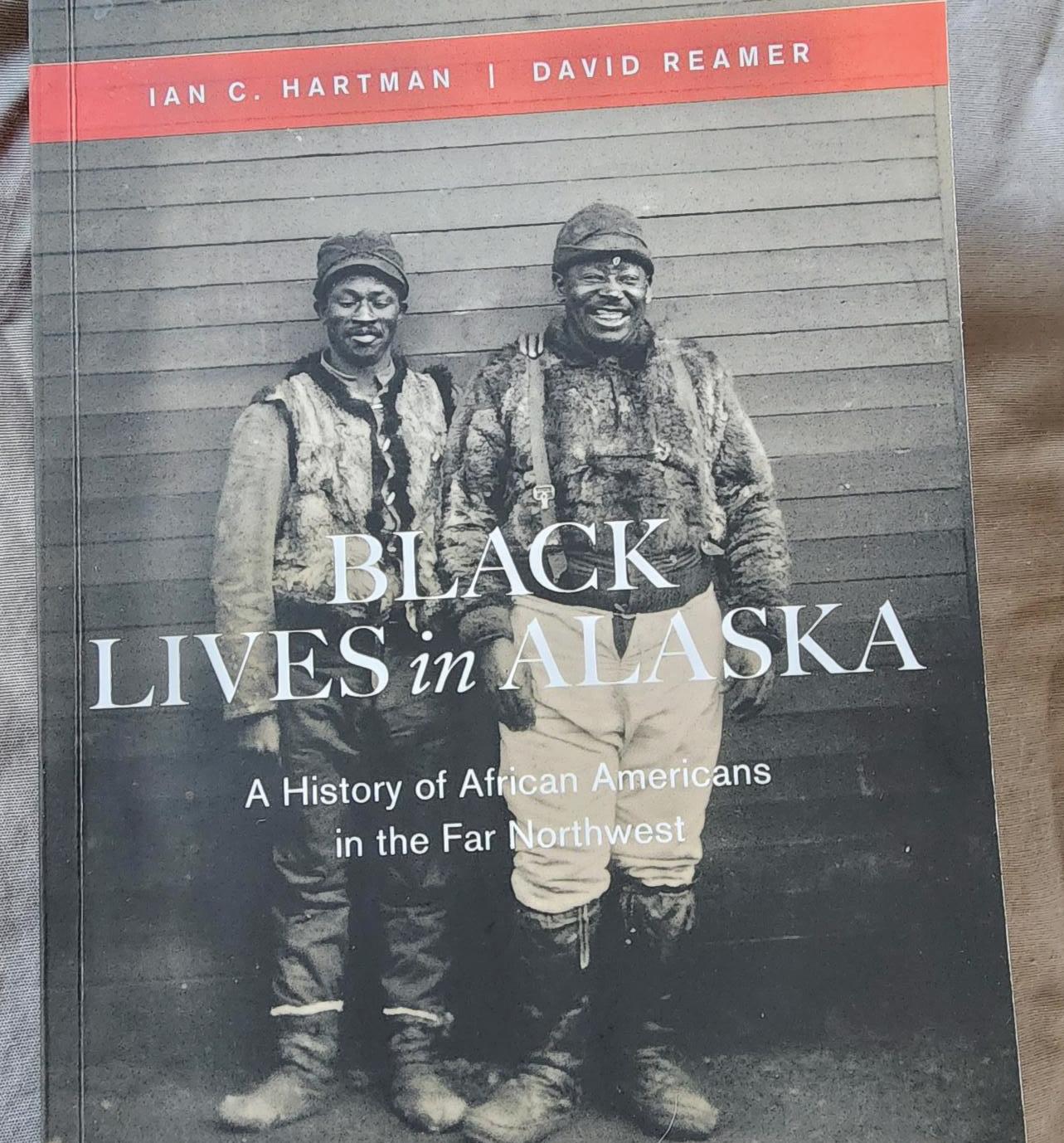
UAA economics professor Paul Johnson weighs in on the banking panic that has spread well-beyond Silicon Valley – forcing the federal government to throw a lifeline to depositors and has many questioning the security of their deposits in other banks.
By Kyle Ivacic news2@thenorthernlight.org
Silicon Valley Bank experienced a run on deposits that culminated in the bank’s collapse on March 10. A bank run occurs when depositors no longer feel that their money is safe in a bank, so they demand their deposits back. Most banks, however, do not hold the full value of all deposits because they loan out money and make investments to turn a profit.
When a run happens and a bank cannot meet demand, federal regulators step in to freeze the bank’s operations and make the decision to either sell the nowcollapsed bank’s deposits to a healthy bank or to pay out depositors.
The run on Silicon Valley Bank failed to meet customers’ demands for deposits – forcing regulators to step in. According to the New York Times, $175 million in customer deposits were put under the authority of regulators following the seizure. Ninety-three percent of Silicon Valley Bank deposits were uninsured by the FDIC as the federal insurance program only insures up to $250,000. Most Silicon Valley Bank customers were tech firms with far more than $250,000 deposited – raising concerns that were later addressed.
Silicon Valley Bank’s demise was the largest bank failure since the 2008 financial crisis and its potential domino effect sent investors, federal policymakers, and firms across the country into a scramble to shore up deposits and the banking system at large.
On March 12 another domino fell when New York-based Signature Bank
was seized by regulators after experiencing a run of its own. Similarly to Silicon Valley Bank, depositors were spooked and lost confidence in the bank’s ability to responsibly hold their money.
To prevent further panic, the U.S. Treasury, Federal Reserve and FDIC made the joint announcement on March 12 that “Depositors [of Silicon Valley Bank] will have access to all of their money starting Monday, March 13.”
This announcement came with the promise that no losses “will be borne by the taxpayer” and that similar provisions will be made for Signature Bank depositors. These provisions, which the institutions are calling “systemic risk exceptions” ensure that all deposits – no matter if they are above $250,000 or not – will be returned in full to depositors.
In a speech on March 13, President
Biden said, “Today, thanks to the quick action of my administration over the past few days, Americans can have confidence that the banking system is safe. Your deposits will be there when you need them.” Issues, however, continued and that same day many banks saw losses in their stock values. First Republic Bank – a regional bank headquartered in San Francisco – saw its stock prices tumble by sixty percent while other medium-sized banks also saw losses.
Just three days later, on March 16, The Wall Street Journal reported that $30 billion in deposits came flooding into First Republic from eleven of the nation’s largest banks – including JP Morgan Chase, Wells Fargo, and Bank of America. According to The Wall Street Journal, this move was “an effort to stop a spreading panic” which regulators say highlights

the soundness of the banking system. Secretary of the Treasury Janet Yellen said that the “support represents a vote of confidence in our banking system.” For now, First Republic has stayed afloat.
The issues in the United States have coincided with another internationally unfolding banking crisis epicentered in Switzerland. Credit Suisse – one of the largest banks in Switzerland – began to have issues of its own and depositors were worried. To prevent yet another bank run and collapse, Credit Suisse was bought out by Switzerland’s largest bank, UBS, on March 19.
To gain further insight on Silicon Valley Bank’s collapse, The Northern Light reached out to economics professor Paul Johnson. In an email, Johnson explained the collapse as follows:
“The problem seems to have been triggered by recent high-interest rates. SVB had invested in buying a lot of long-term, low-yield (low-interest rate) bonds.”
These low-yield bonds became an issue for the bank when the Federal Reserve began to raise interest rates as part of its inflation fighting policy. This action caused the bonds to be worth less than what Silicon Valley Bank had originally bought them for.
“... if SVB wanted to sell bonds on the market it would have to compensate potential buyers for the [low interest rate] with a lower price,” Johnson wrote.
Johnson further explained that, theoretically, “if all the SVB depositors showed up to withdraw their money there would be [none] there. SVB could sell all its bonds and other assets and still not return depositors all their money. SVB would be bankrupt.”
Currently, bank shares and general fears about the banking system have not fully stabilized. Even so, the Federal Reserve’s decision on March 22 to raise interest rates – in an attempt to continue its battle against inflation – cements the federal government’s stance that the banking system is secure. In a March 22 press conference, Chair of the Federal Reserve Jerome Powell reiterated this stance, saying that “the banking system is sound and it’s resilient.”
Conversations with campus housing administrators and a bed bug-affected student shed new light on the campus bed bug situation.
By Kyle Ivacic news2@thenorthernlight.org
Recent bed bug reports in the Fine Arts Building have raised concerns about bed bugs on campus and how bed bugs are dealt with by Residence Life. To find out more, TNL sat down for an interview with Director of Residence Life Ryan Hill and Executive Director of Campus Services David Weaver.
Hill said that bed bugs currently pose only a slightly higher risk to students than they have in the past. There has been a “slight increase” in bed bugs across the state, so Residence Life prepared for a potential uptick on campus, said Hill. However, bed bug infestations in dorm halls have remained near the average expected each school year, said Hill, at “two to three a semester.”
By the end of this academic year, Hill estimated that that number will average closer to four or five per semester – higher than usual, but nowhere near “epidemic” levels that students would need to be concerned about.
Both Hill and Weaver spoke confidently about campus protocols for exterminating bed bugs in student residences.
“We have a very high success rate,” said Weaver.
The extermination treatment is done by heating the affected room to temperatures that bed bugs cannot withstand. To further mitigate risk, the university deploys a non-toxic spray, known as Aprehend in the affected area post-heat treatment.
Aprehend, developed and patented by Penn State, is described on the Penn State College of Agricultural Sciences website as “a fungal-based biopesticide spray that safely kills bed bugs by sticking to the insects, which then carry the fungi back to hiding places to infect other bed bugs.”
To students concerned about being stigmatized when reporting bed bugs, Weaver said, “our philosophical approach to [this issue] is to do everything we can to make the student feel comfortable. We do not blame. There isn’t a ‘you did something wrong’ approach … It’s just part of being attached to a residential campus at any university.”
A student – who wished to remain anonymous to avoid stigmatization –came forward to describe their experience to TNL with a suspected bed bug infestation in their East Hall dorm. They explained that they woke up with bites
on their leg in early February and were told by a doctor that the bites were more than likely from bed bugs. The student reported the bites to their RA on duty who conducted a search of the dorm. The RA found potential bed bug egg casings and skin sheddings – both signs of infestation. The student and their roommates were then moved to emergency housing where they remained until the heat treatment was finished – a process that took place over the course of two and a half
days.
When asked if the treatment was effective, the student said, “Yeah, because I didn’t see anything else at the end. I haven’t had any bites that seem suspicious after that.”
Overall, bed bug infestation risk appears to be low. Those who are worried about bed bugs can utilize university tools to take care of them quickly and effectively at no cost to the student.
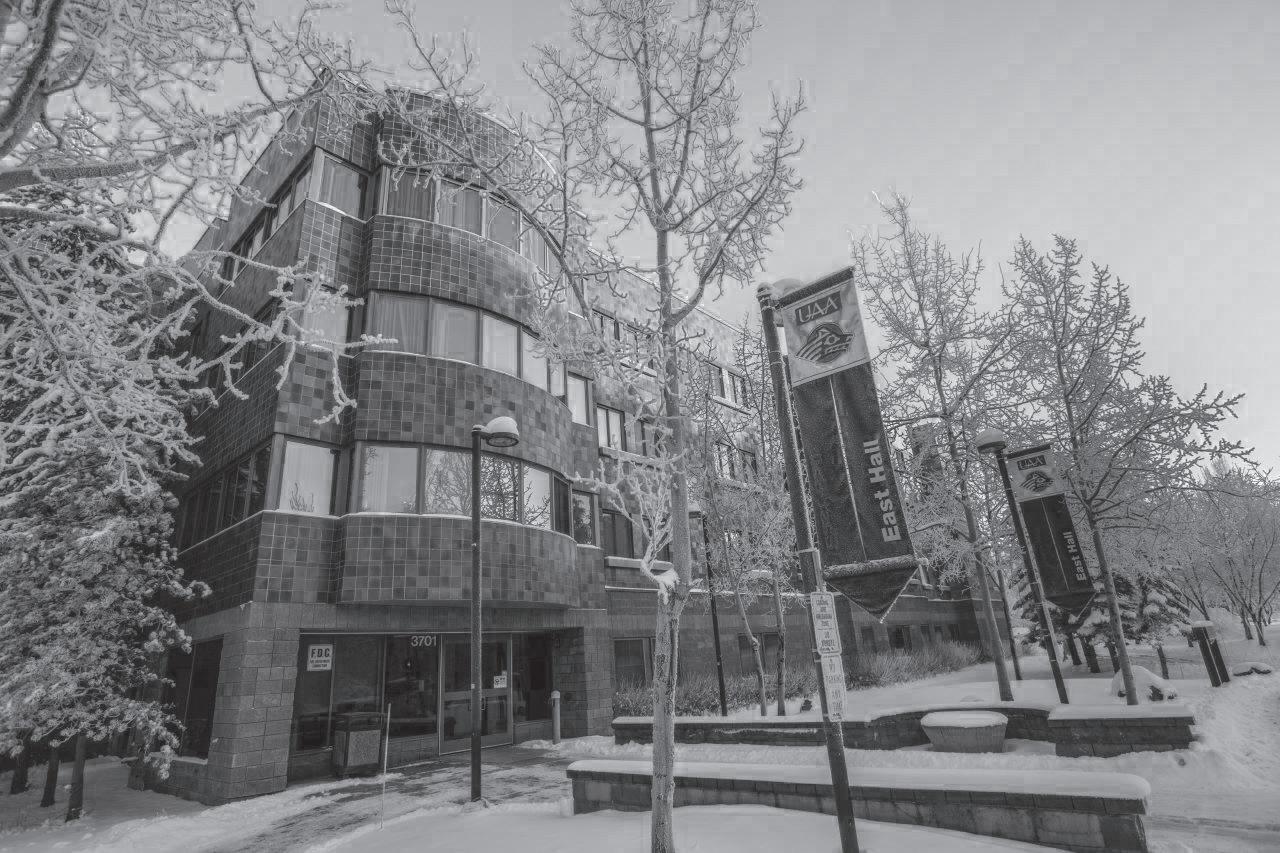
Increased Alaska Performance Scholarship money, textbook transparency and higher student base allocations are all up for discussion in this legislative session.
By Taylor Heckart new3@thenorthernlight.org
From Feb. 26 through March 1, three members of UAA’s student government, USUAA, along with other students representing other UA campuses, flew out to Juneau to advocate for legislation that would impact the university.
The students who attended the trip were USUAA student body president Katie Scoggin, USUAA Senator and Public Relations Officer Hannah Huber and USUAA Senator and Chair of Student Academic Affairs Macchlessy Dinganga.
UAA students only had 15 minutes at a time with legislators, and they were often paired with other advocacy groups. Scoggin said some meetings were relaxed, while some could be quite stressful depending on the legislator.
One of the pieces of legislation that USUAA representatives asked legislators to support was House Bill 10, also known as the Textbook Cost Transparency Act. House Bill 10 would require University of Alaska courses to provide descriptions of required course materials, disclose any zero-cost materials, and disclose any associated fees that would be required for those
materials.
Scoggin says that this bill would be another step in transparency for students, and help college students better budget for the classes they take.
“Something that had been brought to my attention, I believe it was a nursing student, they had budgeted for the semester and they were not told that they needed course materials. So then, the week of, whenever they get their syllabus, that’s a huge surprise.” Said Scoggin, “They don’t have the funds for that. How are they going to get the money? I feel like that’s something students struggle with more than we see.”
This bill is currently in discussion in the House. If it is passed through the legislature, it would go into effect July 2026.
A second piece of legislation USUAA advocated for is House Bill 65, which would increase the base student allocation– how much the government pays per K-12 student– from $5,960 to $7,210. Alaska’s base student allocation has been unchanged since 2017.
Scoggin said that though this doesn’t directly impact the university, increasing the base student allocation would be an indirect impact.
“Investing in K-12 education also impacts the university
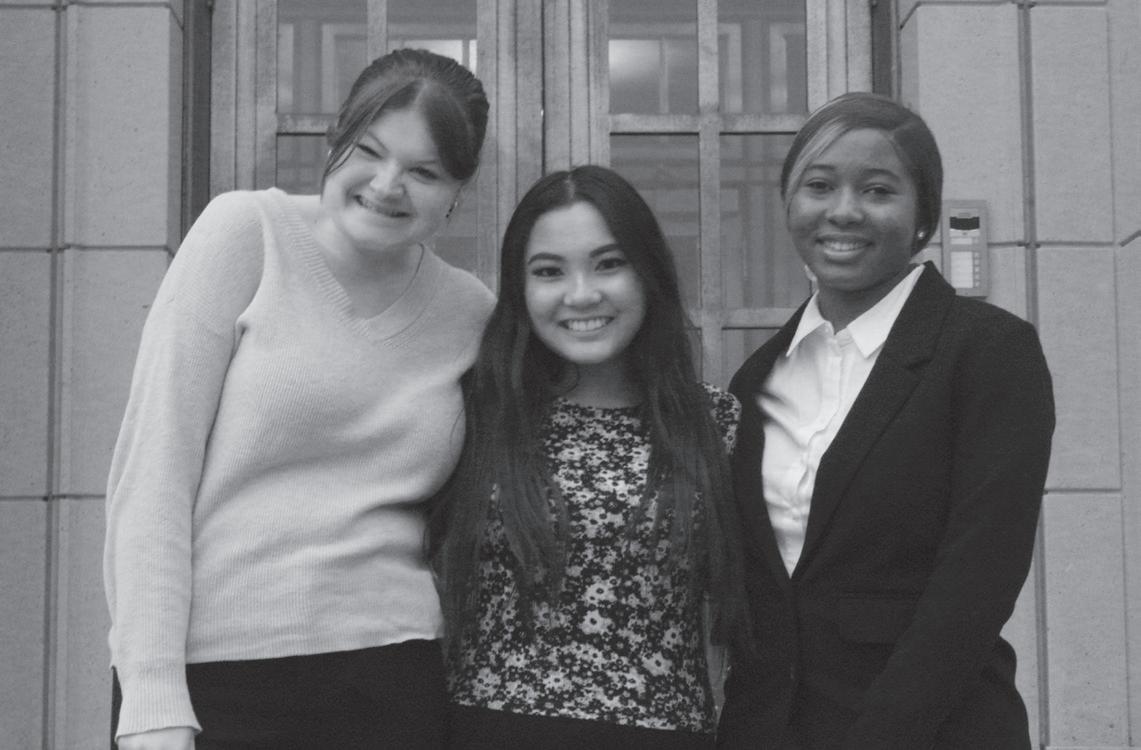
The debate surrounding the use of artificial intelligence heats up as an open letter –signed by, among others, Elon Musk – calls for the brakes to be pumped on AI training.
By Kyle Ivacic news2@thenorthernlight.org
The debate on artificial intelligence reached an inflection point on March 22, when an open letter, signed by more than 2,806 people, was released calling for a six-month pause on “the training of AI systems more powerful than GPT-4.” The letter was signed by a mix of business, technology and political leaders such as Twitter and Tesla CEO Elon Musk, Co-Founder of Apple Steve Wozniak and Forward Party Co-Chair Andrew Yang. Artificial intelligence has become a hot topic as modern computers and machines have become able to quickly learn patterns, enabling them to write accurate text, convincingly manipulate photos and videos and create breathtaking art. Given the rate of technological ad-
vancement – each year allowing for faster and more robust computing – many feel that our society is poised for fundamental change.
The letter recommends that, “Powerful AI systems should be developed only once we are confident that their effects will be positive and their risks will be manageable.” It advocates for oversight of artificial intelligence that will ensure “well justified” confidence that the risk of powerful artificial intelligence systems will be manageable. According to signees, these risks include job automation, misinformation bots, the obsoletion of human intelligence and a potential loss of control over civilization.
Although concerns abound, artificial intelligence is being used in Alaska. UAA Computer Science professor Shawn Butler has employed machine learn-
ing to combat the spread of COVID-19 misinformation online. According to a media release on UAA’s website, Butler’s research has resulted in a program that identifies such misinformation with 80% accuracy – a rate that Butler expects will rise as the model is given more data to learn from.
Some have hope that artificial intelligence might lessen the effects of political polarization caused by misinformation, if used constructively. A 2020 Stanford University research paper titled “Designing AI for All: Addressing Polarization and Political Anger” notes that AI-powered language processing models might someday “impartially highlight commonalities across articles [by different news outlets]” and “clarify” issues for people, regardless of where they exist on the political spectrum.
because we know that … our middle college programs or dual enrollment programs have been so successful at ... streamlining students from high school into higher education.” Scoggin also said that investing in K-12 education may be a way of making sure people stay in the state.
HB65 is currently still in discussion in the House.
Another bill that students advocated for is House Bill 31, which would bring massive changes to the current Alaska Performance Scholarship. House Bill 31 would increase funding to each tier of the Alaska Performance Scholarship, making the highest tier $7,000 instead of $4,775, the middle tier $5,250 instead of $3,566, and the lowest tier $3,500 instead of $2,378. The bill would also increase Alaska Performance Scholarship eligibility to eight years after high school graduation instead of six.
Scoggin said increasing funding to the Alaska Performance Scholarship is vital. “[The Alaska Performance Scholarship] is still very, very helpful, but it doesn’t cover anywhere near the amount that it used to.” She said, “If you’re not increasing the funds, you might as well be making a cut due to inflation.”
HB31 is still in discussion in
The Stanford researchers cited a nationwide survey of 10,000 adults conducted by the nonpartisan Public Religion Research Institute that found that 91% of Americans believe that the country is divided over politics. The Stanford study concludes that artificial intelligence could “increase tolerance of polarization” and reduce the dangers posed by a polarized society. Some educators are concerned with the potential for artificial intelligence to be used by students to cheat on assignments. ChatGPT, a language program produced by Open AI, can be easily accessed by students and used to write anything from short sentences to multiparagraph essays. The Anchorage School Board updated its academic honesty policy on Feb 7 to include language that prohibits students from claiming “products generated by Artificial Intelligence as their own.”
The move is just one of many across the nation intended to curb artificial intelligence-driven plagiarism.
By Eli Rupp video@thenorthernlight.org
Text USUAA, UAA’s student government body, held a meeting on March 24 in the Lyla Richards conference room of the Student Union.
Present for the meeting were President Katie Scoggin and Vice President Shanone Tejada, Senators Seth Burch, Zach Ahrens, Matthew Green, and Machelssy Dinganga. Also present were delegates Albiona Se-
limi, Yuki Mustang, and Jared Vaughn, and Liaison Brian Cuevas-Fuentes. Other members of USUAA joined via zoom. Lara Volden, The Associate Vice Chancellor for Enrollment Services, as well as Jasmin Davis of System Wide OIT spoke to the senate about the university’s current recruitment videos, and asked permission from the senate to acquire footage of an upcoming meeting for future videos. The senators expressed excitement at this idea, and
agreed to participate.
Volden then turned the floor over to Davis, who gave a short talk on the current status of the UAOnline system, as well as some general technical advice for students in regards to any issues that may arise.
Advisor Zac Clark gave a brief overview of current weekly events happening on campus, including a 12-hour charity livestream, a panel on local women in politics, and a student art show. Upcoming stu-
the House.
Scoggin said that one final priority of the trip was talking to legislators about deferred maintenance. With emergency telephones down, a broken elevator in East Hall, boiler failures in Rasmussen Hall and the Professional Studies Building, pipe failures, flooding, and more happening this semester, UAA has asked for substantial funding in deferred maintenance costs this year.
According to UAA’s Facilities Conditions Index in the Facilities Needs 2022 Annual Report, the facilities with the most critical needs are the MAC and Templewood Apartments at Residence Life.
“The reality is, if our buildings close because of these failures and all of these maintenance issues, so do programs. And when our programs start closing, we start losing students,” said Scoggin.
Scoggin said participating in this trip and being able to advocate on behalf of UAA was a “once in a lifetime experience.”
“I think being in the state capitol made me realize how even more strongly how crucial it is for people to get their stories out.”
In an email with The Northern Light, USUAA Senator and Chair of Student & Academic Affairs Macchelssy Dinganga wrote that this trip was one of her “biggest dreams come true”.
“This trip taught me that my voice had [more] power than I expected. Back at home, having this opportunity to meet with legislators who are welcoming and willing to hear you out is so difficult, so doing that here is a great privilege.”
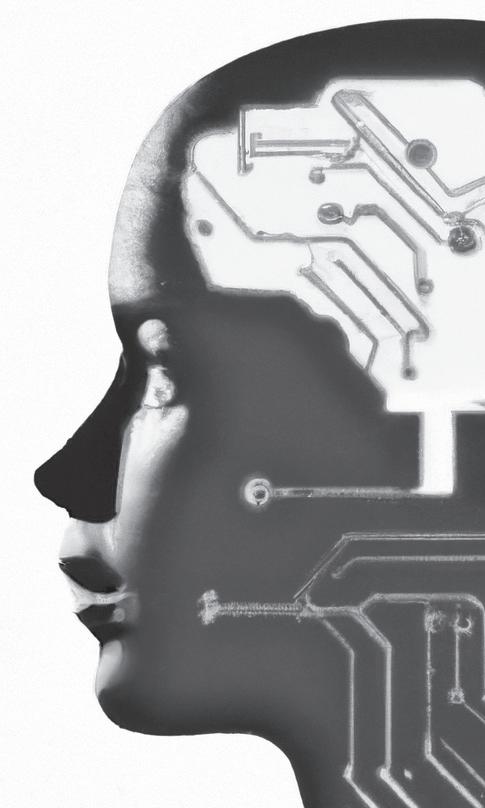
Whether or not artificial intelligence has the power to ultimately change society remains to be seen, but even in its currently limited state it has already been enough to create smallscale change and force debate that is unlikely to settle anytime soon.
dent events include karaoke and game night on March 29, a reception for a student art show, a film screening in celebration of Trans Day of Visibility, and a UAA movie night showing of the new Dungeons and Dragons movie on March 30.
Clark also presented a general report of various board meetings from the past week to the senate. Concert Board will begin hosting live music again on Wednesday, April 5th, and shows are planned to contin-
ue every Wednesday throughout the month. The Green Fee board is currently in the process of planning a “Green” week in April. The Media Board also met earlier that day and discussed a number of ideas with Facility Services Coordinator Kim Mahoney, including potential future renovations and moves for student organizations. After board and committee presentations were completed, the senate moved into an executive session and adjourned the meeting at 5:20 p.m.
Governor Dunleavy’s proposed parental rights bill has drawn lots of attention and controversy in the state, and it’s not the only legislation affecting LGBTQ individuals.
By Taylor Heckart new3@thenorthernlight.org
Governor Dunleavy announced Senate Bill 96 and House Bill 105 on March 7, known as the Parental Rights in Education Bill. Previously, parents were required to be notified two weeks before a school activity or class discussed “human reproduction or sexual matters.” These bills amend existing state law to require that discussions of gender identity be added to this list, and require that parents provide written permission for the child to participate in that activity.
In addition, SB 96 and HB 105 require written parental permission before the name or pronoun of a student is changed in school records, school IDs, or in-person. These bills also require that parents are informed in writing about their “right to pursue legal action against a school district if the parent’s rights have been violated.”
They also require that schools adopt “procedures to address the physical safety and privacy of students in locker rooms and restrooms through the separation of students by biological sex, access to
single occupant facilities, or other safety and privacy protocols”
In a March 15 Joint House and Senate Education Committee meeting, Student Advisor Elect Felix Myers and Student Advisor Maggie Cothron, both of whom are high schoolers, spoke up against the Parental Rights in Education Bill.
“Gender identity is a very vague term,” said Myers, “How can we talk about historical figures without talking about their gender? With Martha Washington, are we now going to have to send out permission slips before talking about the fact that she was the wife of George Washington?” Meyers called into question the ability of educators to effectively teach subjects if they have to avoid the topic of gender identity.
“I think, as our goal is to provide a high quality education to every single student, it’s important to address that this bill would severely diminish the ability of the education for many of the students, especially as we move into a time where many more students are finding themselves,” said Myers.
In a video uploaded to Twitter on March 8, the Governor insisted that
these bills would not remove LGBTQ rights. Instead, Dunleavy said that this legislation “affirms the rights for parents to be part of the discussion … to give permission whether they want their child or children in programs, in classes, part of clubs, – you name it – talking about issues involving sexuality or gender.”
Since the bills have been introduced, HB 105 has been discussed in three House education meetings, the most recent of which, held on March 30, was over five hours long. SB 96 has not been in discussion in any committee meetings.
According to a memo -
randum from the State of Alaska Legislative Affairs Agency, a non-partisan support agency for the Legislature, the bill may be considered unconstitutional under the Privacy Clause of the Alaska State Constitution.
The Privacy Clause reads, “The right of the people to privacy is recognized and shall not be infringed.”
According to the memo, there are two categories in right to privacy cases: claiming personal autonomy, and protecting sensitive information from the public. This legislation could violate the second part.
The memo said that
stopping a transgender or gender nonconforming student from using a bathroom of their choice may publicly disclose they are transgender or gender nonconforming, violating their right to privacy.
According to the Alaska Beacon, this legislation is unlikely to pass, as it lacks support from the Senate. However, this is only the first in a long line of recent legal actions with potential effects for LGBTQ individuals in the state.
This legislation comes after ProPublica and the Anchorage Daily News reported that the Alaska State Commission for Human Rights deleted language protecting LGBTQ Alaskans from many forms of discrimination
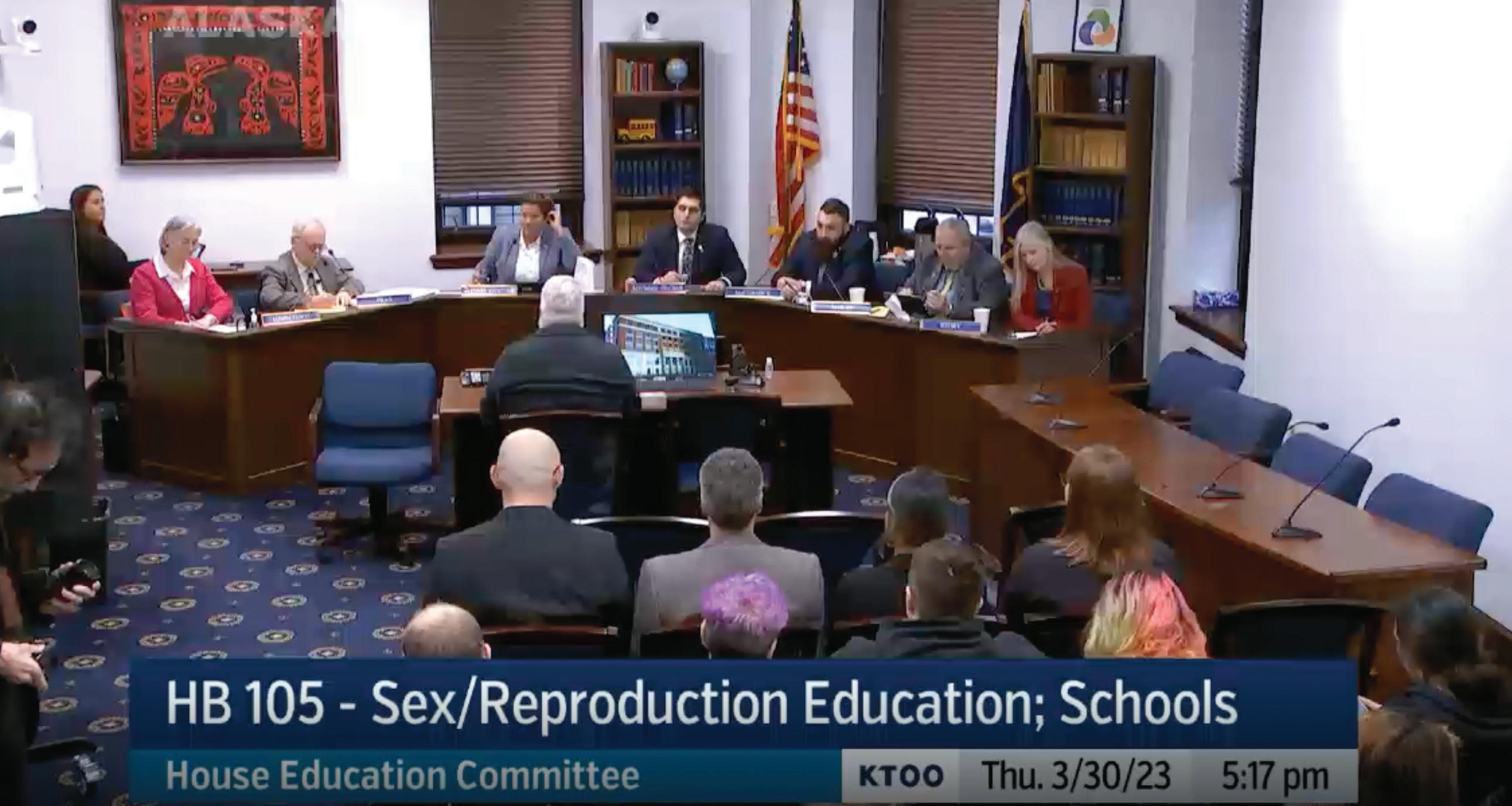
By Jasmine Grant news@thenorthernlight.org
Model United Nations at UAA was held on Feb. 23, 24, and 25. It was the first in-person conference at UAA since February of 2020.
Almost every high school in ASD is involved along with some out-oftown high schools, said Model UN faculty advisor Kimberly Pace. In addition, Marian University from Indianapolis also participated.
Model UN is a simulation of the United Nations and has been offered by the UA system since 1982. The theme this year was “The Future of Freedom: Ethnic Tensions, New Media, and the Democratization of Information.”
Themes are chosen by
teachers, said Pace. Committees are chosen by Pace, the Secretary General, and the President of the General Assembly, she said.
Selected committees for 2023 include The Arctic Council, headed by Jiale Turner and Denali Partridge, The International Telecommunication Union headed by Eugene Ye and Mckayla Montgomery, and The UN High Commissioner for Refugees headed by Hannah Utic.
The International Criminal Court was headed by Tuan Graziano, as Chief Justice, Emma Mullet and Savannah Melendez. Also, the UN Security Council was headed by Taylor Heckart, and The UN Permanent Forum on Indigenous Peoples was
headed by Katie Scoggin, permanent committees for UAA Model UN.
“Being back in person has been a very surreal experience,” Secretary General Matthew Green said in an interview.
Green first participated in Model UN as a senior at Chugiak High School, which was the first year it was offered at his school. He worked as a Secretariat in 2021 and became Secretary General the following year.
“It definitely means a lot to me that I was entrusted with helping keep the program alive and being given that responsibility to replicate what was my experience,” Green said.
Green also helped to develop a fall virtual conference in 2021. The fall
Continued from cover: TRUMP
serves a fair legal process,” said Alaska Senator Lisa Murkowski in a statement regarding the indictment on March 30. Senator Dan Sullivan spoke against the indictment saying in a statement that it “has moved our country into banana republic territory” and that it is an “abuse of law.”
General Counsel to the Manhattan District Attorney’s Office Leslie Dubeck wrote in a letter to House Republicans that “you and many of your colleagues have … made unfounded allegations that the Office’s investigation, conducted via an independent grand jury of average citizens serving New York
State, is politically motivated.”
The Associated Press reported that three sources close to Trump expect the former president to turn himself in on Tuesday April 4 – a move that would forego the extradition process.
It is unclear at this time how the process of bring-
conference is only oneday-long and doesn’t require students to write resolutions.
“That was a way for us to prepare students for our spring conference,” he said.
Along with leading committees, Secretariats help teach high school students and other UAA students about Model UN.
Students at UAA learn about Model UN in a three-credit course offered in the spring semester. The Secretariat visits high schools to give them tips, Green said.
A post-conference survey collected 79 responses from students on their Model UN experience.
One student wrote that they had gained “a huge appreciation for the amount of knowledge and cooperation real UN delegates must demonstrate, and for the knowledge and debate skills of Anchorage high schoolers.”
“It was perhaps the most emotional Model
ing a former president to court will be conducted.
In an interview with CBS on March 31, Trump lawyer Joe Tacopina said, “This is a case of firsts for all of us. You have Secret Service involved, NYPD, Court Officers Union – so I’m not sure exactly how it plays out, but we’ll get through it.”
The New York City Police Department has been fully activated to quell
and stopped investigating complaints.
In response to this news, UAA Chief Diversity Officer Jennifer Booz sent out an email to the UAA community on March 15. Booz wrote that many people have written in with their concerns about this changing language and said, “At UAA, we foster an inclusive, welcoming and respectful campus community that promotes diversity, equity and an appreciation for each unique member of our academic community. We honor diverse experiences and perspectives, including differences in gender, gender identity and sexual orientation.”
The email said that UAA is guided by the Notice of Nondiscrimination, which includes gender identity and sexual orientation among its protected statuses.
House bill 99 was introduced to the legislature on March 8, which is a bill to prohibit discrimination based on sexual orientation or gender identity. This bill was also introduced days after the ProPublica and Anchorage Daily News report.
According to Alaska Public Media, this bill is sponsored by the state’s first openly queer lawmakers. This bill is still under discussion in the House.
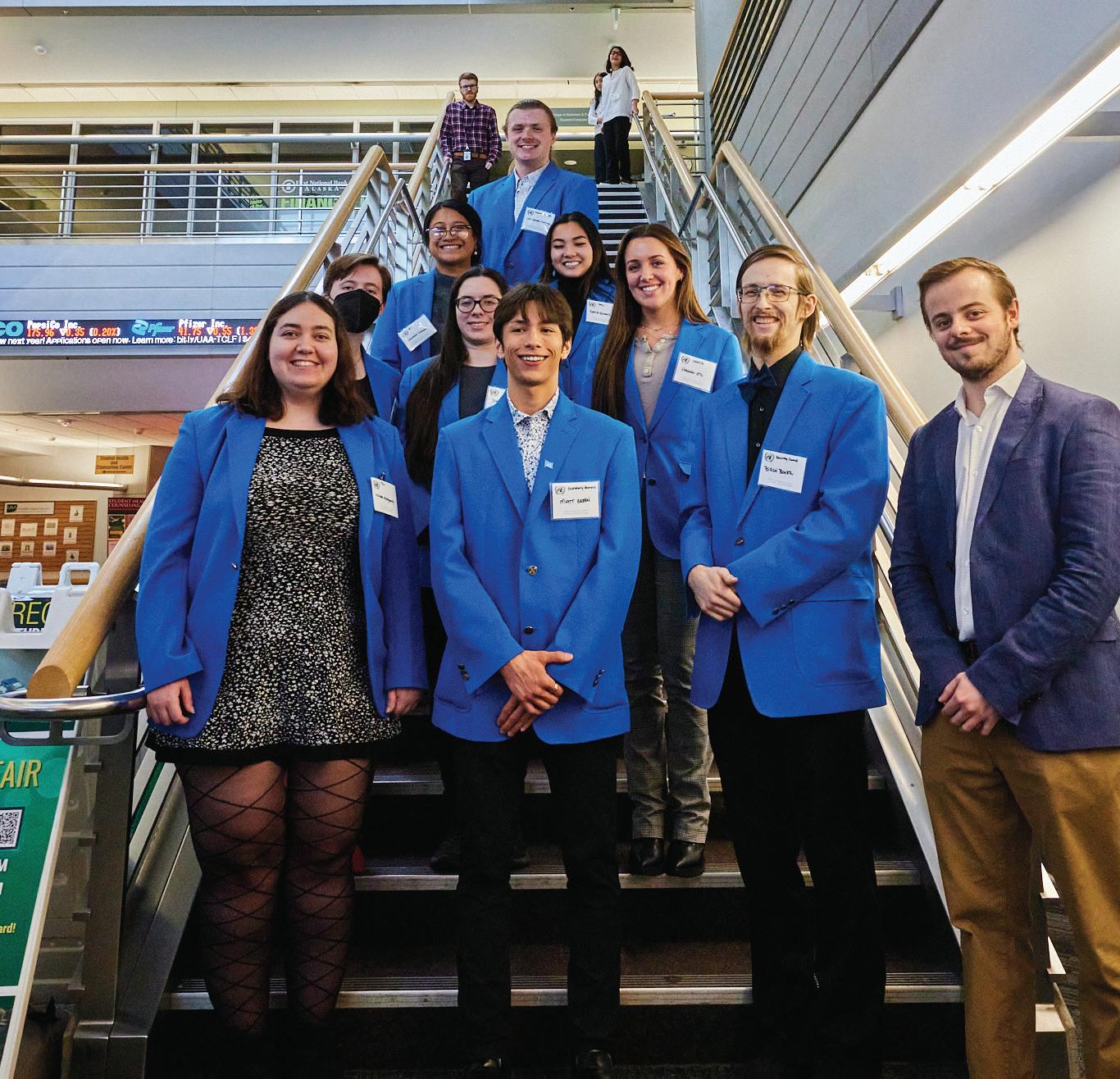
UN conference I’ve had.
Being able to return to Wendy for the first time in three years; caucusing, deliberating, laughing, sharing memories, I missed it so much,” someone wrote.
“We got gleaming feedback from faculty members and teachers who previously participated,” Green said, “They had told us that it’s as if we hadn’t stopped.” UAA Model UN is still working to get attendance back up to pre-pandemic numbers. Things are looking up.
any potential unrest that might occur in the coming days and weeks. ABC 7 New York reported that “Barriers and blast protectors have been in front of Trump Tower for a week and on Friday [March 31] all 35,000 members of the NYPD were required to show up.” At this time, no unrest has occurred.
This is a developing story.
“I would say that it was a grand success, because we were able to replicate that experience that we had pre-pandemic,” he said.

Maximilion Helgeson scores the first hat trick – three goals in one game – by a Seawolf player since 2014 against Lindenwood University on March 10 at the Seawolf Sports Complex.
By Avery Williamson sports2@thenorthernlight.org
After battling the Lindenwood Lions for three regulation periods and one overtime period, the Seawolves recorded their first tie-game of the season at 7-7. Helgeson led UAA with three goals, the first UAA hat trick in nine years.
Helgeson’s dominant game began immediately, with him scoring his first goal just over three minutes into the opening period. The Seawolves then extended their lead to 2-0 with a goal by Brandon Lajoie six minutes later.
With about six minutes left in the first period, the Lions frantically tried for a goal. Dylan Finlay blocked the shot, but the
visitors secured the richotted puck and fired it into the goal. The rest of the period remained scoreless and the Seawolves entered the second period with a 2-1 lead over the Lions.
The second period featured four goals by both teams. It began just like the first period, with Helgeson immediately scoring. The Seawolves then extended their lead to 4-1
with a goal by Matt Johnson.
The Lions responded, however, scoring two goals within the next three minutes. Only five minutes into the second 20 minute period, both teams had already scored two goals. The Seawolves led 4-3.
The next 10 minutes were full of penalties, blocks, and missed shots.
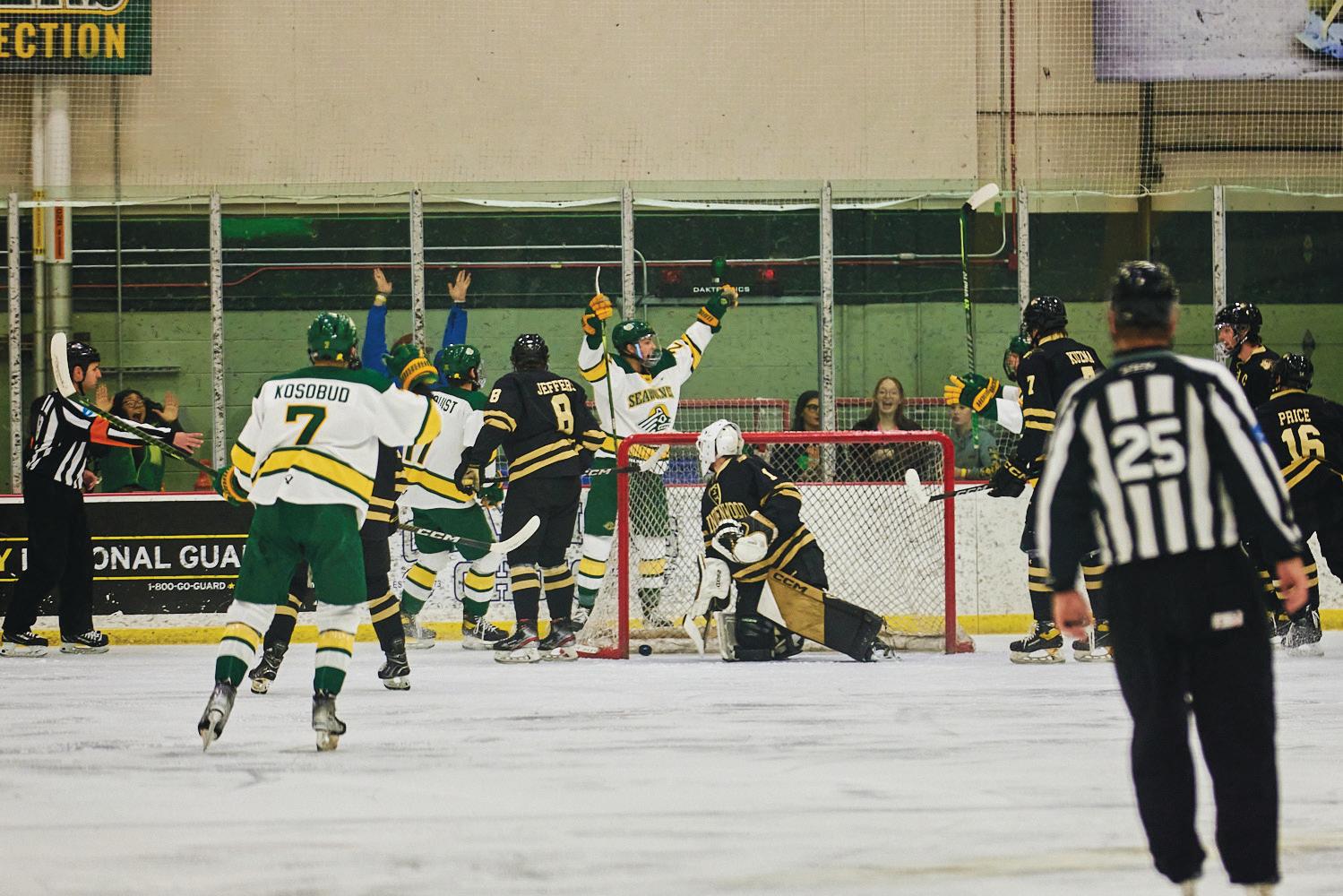
Neither team could connect with the goal until Caleb Hite won a faceoff and fired the puck past the goalie.
The Seawolves drew off this momentum for another goal. Only 32 seconds later Lajoei scored his second goal of the night and advanced UAA’s lead to 6-3.
The Lions didn’t accept defeat, though. A little over 30 seconds later they scored their fourth goal of the night, and two minutes after that they connected with the goal again. The Seawolves entered the third period with a 6-5 lead over the opposing team.
As the third period began, it appeared that both teams had lost their touch.
The Seawolves and Lions struggled to connect with the goal, and they both faced several penalties.
With just over two minutes left in the game, though, the Lions broke the dry spell with a goal, tying the game at 6 apiece.
The Seawolves felt the pressure, and only 26 seconds later Helgeson completed a hat trick with his third goal of the game and eleventh goal of the season. The crowd broke out into cheers and hats went flying. However, only one Seawolf fan managed to get their hat onto the ice.
It seemed the Seawolves were about to defeat the Lions 7-6, but the visitors refused to give up. They removed their goal-
ie from the game so they could have another offensive player on the ice. And their strategy paid off, because with 31 seconds left in the game, the puck hit the back of the net in the Seawolves’ goal and the teams entered overtime.
In NCAA hockey games, overtime is a five minute period in which the first team to score within the time wins the game. If neither team is able to score, the game is declared a tie.
Both teams took several shots within the five minute period, but tough defense on each side of the ice made it impossible for either team to score and the game ended at a 7-7 tie.
In an interview with the Assistant Director of Athletics Ian Marks, head coach Matt Shasby praised the Seawolves and the crowd. “I was happy to see the offensive output from all four lines,” Shasby told Marks. “Another great crowd tonight, they kept us going through the highs and lows of that game.”
The Seawolves returned to the ice the next night to take on Lindenwood for the second game of the series. Once again, the game entered overtime, but this time the Seawolves were able to score within the five minute period and UAA secured a 4-3 victory in the final game of their season.
By Avery Williamson sports2@thenorthernlight.org
After tying 7-7 with Lindenwood University the night before, the Seawolves returned to the Seawolf Sports Complex on March 11 eager for victory. Connor Marritt’s overtime goal granted UAA a 4-3 win over the Lions in the final game of the season.
The game got off to a slow start as neither team was able to connect with the goal. With a minute left in the first period, the Seawolves found their groove, and Ben Almquist got the team on the scoreboard with his ninth goal of the season. UAA entered the second period with a 1-0 advantage over the visitors.
The Seawolves carried their momentum into the second period with Davis Goukler scoring only four minutes after the starting face off. The Lions
responded with a goal of their own 30 seconds later, though.
With the crowd still booing at the opposing team, Almquist won the face off and quickly passed to Maximilian Helgeson. Helgeson then fired the puck right past the goalie for another Seawolf goal. The crowd’s booing turned into cheering and the student section banged on the glass around the ice to show their support. The Seawolves led 3-1 with 15 minutes left in the second period.
Three minutes later, William Gilson was sent to the penalty box for tripping. Down a player, the Seawolves clutched up on their defense, blocking several shots by the Lions. As Gilson skated back onto the ice at the end of his penalty, though, Lindenwood finally connected with the net.
Two minutes later, the Lions tied the game 3-3. The rest of the second period was scoreless and
the Seawolves entered the third period tied with the visitors.
While the third period was scoreless, it still featured lots of excitement in the form of penalties. The Lions were given six penalties, including two major five minute penalties and two game misconduct ten minute penalties. The two Lindenwood players with ten minute penalties left the game after attempting to fight the Seawolves.
The tension was high in the game and the crowd as UAA entered overtime. Fans had left in disappointment the night before in the 7-7 tied game. However, the Seawolves were not about to repeat history.
Matt Allen won the face off for UAA and set up the winning play for the Seawolves. He passed to Max Osborne who found Marritt near the goal. Marritt then fired the puck into the net, winning the game for the Seawolves. The crowd erupted into cheers, and the players skated up to
the glass to celebrate with the student section. The Seawolves secured a 4-3 victory over Lindenwood in their season finale.
“Great way to finish the season,” head coach Matt Shasby told Assistant Director of Athletics Ian Marks. “Proud of our leadership group for the
way they set the foundation in year one. Every student-athlete in that locker room did an amazing job representing the university. Thank you to all the fans and supporters for the amazing scenes at the Seawolf Sports Complex.”
With their win over the Lions, the Seawolves finished their season with 8-19-1 record (win-lossesties). This game was also Nolan Kent, Caleb Hite, Jamie Collins and Derek Hamelin’s final collegiate match.
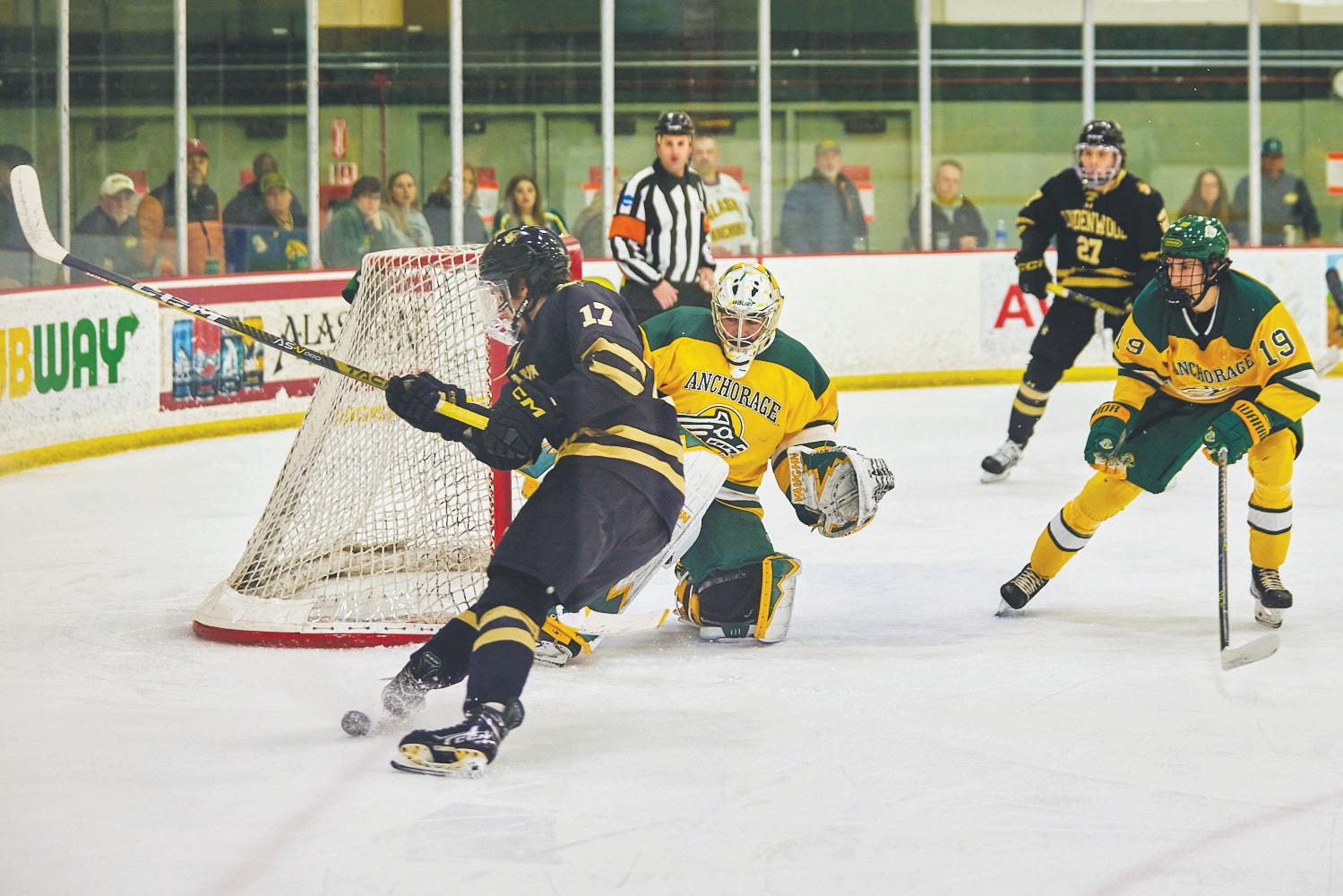
TNL is doing a series looking into food options on campus, and this story considers bringing your own lunch because eating out everyday is too expensive and skipping meals is bad for your health.
By Kaycee Davis features2@thenorthernlight.org
As a college student, eating out for lunch is easy. As is buying ready-made food from the grocery store. Unfortunately both ways can quickly get prohibitively expensive and blow any kind of nutritious diet you might be trying to maintain. Going hungry shouldn’t be an option for many reasons and Prevention, a healthy life-style magazine that has been around for over 70 years, says that while you may think you are only missing calories, you are actually hurting your metabolism and you are making yourself tired, neither of which are good for college students who are working hard. According to the Expatistan website, a collaborative cost of living website that helps people decide what living in a certain area will cost, it costs $16 for a no-frills lunch in Anchorage’s business district. Eating lunch out even just once a week can easily set you back $60 every month.
It doesn’t matter who you are – college student, university employee, or a dorm resident, if
you are too far from your personal kitchen to easily access it, bringing your own lunch might be a solution.
What is stopping you from bringing your own lunch? Maybe you have tried and found yourself in a rut, remaking the same sandwich from foods you purchased on your latest Costco run. That is a way to eat, but it quickly becomes boring and is easy to forget to do if you are uninspired.
I have found that packing a lunch every day isn’t something you declare you will suddenly do. If you are not already in the habit, bringing any meal to school or work on a regular basis is a lifestyle change. After several failed attempts, I got into a routine when I decided that I would bring lunch to school for myself on a certain day of the week. The savings started adding up. By the end of that semester I was making lunch for every member of my family five days a week and was able to allocate a significant portion of my family’s budget to other expenses. It was like getting a raise. What works for one person for making lunches every day might not incentivize someone
else. For me it was saving money, but my teenage daughter Tatiana enjoyed coming into our kitchen and chatting with me while I made lunches. Sometimes she helped me as I prepared food. Now she is hooked and has some friends with whom she Zooms, and they make lunches together a few evenings during the week.
Purchasing food to make into lunches can be a challenge. It is easier and more cost effective if I buy small bags of chocolates or trays with portions of cheeses and raisins– otherwise I would probably eat multi-serving bags as snacks. When my family was bigger, buying loose and in bulk was easier. If you see deli meat on sale and you want to save it, Good Housekeeping gives details on freezing it, and you can use the packaging it came in.
When it comes to processed foods, I discovered that not all are created alike. According to Healthline, the term “healthy” is not used as much because it “demonizes” foods that are processed. The current word is “nutrient-dense,” which refers to foods that have a lot of nutrients per gram.
According to WebMD, most adult males need an average of
56 grams of protein every day, and most adult females need an average of 46 grams. To get an idea of what this means foodwise, an egg salad sandwich can give you 10 grams of protein, which is almost 20% of your protein requirement. Peanut butter, of which two tablespoons equals 8 grams of protein, is an affordable source. Good Housekeeping has compiled a list of 30 processed foods, with Hippeas Organic Chickpea Puffs near the top of the list as a prime choice of a processed food that is both a significant source of protein, and nonperishable.
When I started making and bringing my lunches to school every day, I realized that I wasn’t always going to be scoring gold stars on every meal. Usually my lunches brought to school and work are “fine” — nothing to brag about, but still filling and I look forward to eating them.
I don’t have a problem eating a sandwich most days with a few high protein snacks to round them out. Two fancified lunches make up for the run of the mill lunches on other days. I would like to be plastic free, but that is a work in progress. After several years of eating with plastic utensils, I spent around $9 on a small container from Walmart that holds a knife, fork, and spoon. IT took me that long to decide that I would wash my silverware after every meal and I have a dedicated place to store it in my backpack where I won’t lose it. It is always fun to try new things and what website is better for inquiring than Bon Appétit?
Senior Editor Christina Chaey says, “I’ve also found creative freedom in ditching the notion that lunch has to look like something you’d find on the menu at an all-day café.” She challenges readers to spend some time cooking every day, which is where it doesn’t take a lot of time to try something new with little commitment. “I’ll put on the kettle for coffee, then tackle a small cooking task in the six or so minutes it takes the water to come to a boil.” She describes using that time to saute some fresh greens, oil, and garlic, or make a sauce that she will use later. She calls these “mini-prep moments.”
I have tried Chaey’s idea of cooking something on the stove while my tea water is heating up and I like it. It is almost like setting a timer for myself to speed things up in the morning, a game of seeing how much I can get done in six minutes. I do most of my preparation the night before, simply because if I don’t have time to clean up, I feel terrible thinking that one of my family members will walk into it later. I think that the experience of making and taking my own meals to school and work has been a 100% good experience. It has been better with my daughter also getting into the habit because she doesn’t think of it as a chore– it is just something she does. We are saving money, we are guiltlessly eating every day. When we learn and share good habits, we influence people around us to do the same.
This year’s newest horror-comedy takes a cocaine-fueled true story and cranks it up to 11.
By Taylor Heckart new3@thenorthernlight.org
In 1985, a 150-pound black bear overdosed on several million dollars worth of cocaine in Tennessee. The bear had gotten into packages of cocaine that had been dropped by a parachuting smuggler who had fallen to his death carrying the load. That story is entirely true, and it would go on to become the very loose basis for the 2023 horrorcomedy “Cocaine Bear,” the trailer for which took the internet by storm last year.
The film is directed by Elizabeth Banks, who played Effie Trinket of the Hunger Games series. She’s also the director of the 2019 remake of “Charlie’s Angels” and “Pitch Perfect 2.” Stars in “Cocaine Bear” include Keri Russell, “The Americans,” O’Shea Jackson Jr., “Straight Outta Compton,” Alden Ehrenreich, “A Brave New World,” Jesse Tyler Furguson, “Modern Family,” and more.
Staying true to the original story, “Cocaine Bear” does begin by dropping tons of cocaine into the wilderness for a hapless black bear to discover. Unlike reality, this bear becomes violent, immediately killing one hiker and maiming another before going into a violent rampage through the forest.
The film follows four storylines: middle schoolers Dee Dee
and Henry, who skip school to go play in the forest, drug traffickers Daveed and Eddie who are sent to recover the cocaine, Dee Dee’s mother and two park rangers trying to find her, and small-town detective Bob, who is trying to find the drug trafficker in charge of smuggling all of the cocaine. All find themselves running around the Chattahoochee National Forest desperately trying to avoid the murderous cocaine bear, who will do anything for more cocaine.
If the plot sounds absurd, that’s because it is. It’s a bear on cocaine.
Many times throughout the movie I had to ask myself, “What did I just watch?” The bear sound effects sound like they came from a sound library — and likely did — children are literally eating cocaine they found in the woods, people lose body parts in all sorts of ways, and a very liberal amount of blood and guts appears on screen. That’s the point, though. This movie wants to be a cheesy 80’s horror-comedy, and they go out of their way to underline the absurd.
And the approach seems to have worked. Over a month in from its February 24th theatrical release date, “Cocaine Bear” has already made more money than the cost of production: the film cost around $35 million to produce, and has made over $58 million domestically and 75 mil-
lion worldwide.
“When you’re hit with two words like ‘Cocaine Bear’, you know you need to write about them,” said Screenwriter Jimmy Warden in an interview with Variety.
According to the interview, Warden wanted to give the original story a twist, however, drawing more sympathy to the bear’s situation.
“I wanted to give the bear a redemption story. What happened to the bear in real life is quite tragic. It’s not the bear’s fault that drugs fell out of the sky into its den and that it ate ki-
los and kilos of cocaine.”
In that same interview, producer Chris Miller addressed the internet’s reaction after the trailer dropped in November. “Only then did we become confident that the world was going to understand the tone we were going for,” Miller said. “The tone was the trickiest part of this thing because if it’s too silly and broad and feels like a Saturday Night Live sketch, it can’t sustain a whole movie. But if it’s too dark and gritty, it’s not gonna feel like the fun time at the movies that we were going for.” It may not be the most intel-
lectual movie out there, but the producers of “Cocaine Bear” definitely created something fun. It’s the kind of movie I enjoyed watching once, but the rewatch value may not be as high. If ‘Cocaine Bear’ is on your watchlist, I’d recommend excessive amounts of popcorn and a few friends. That way you all can ask “What did I just watch?” together.
“Cocaine Bear” is still in theaters and can now be found streaming online. Buyer beware, though, this movie is definitely bloody.

TNL is doing a series looking into food options on campus, and this story reflects on donating to departments on campus that address Seawolf food insecurity issues
By Kaycee Davis features2@thenorthernlight.org
When my children were little, my husband and I struggled on his single income. I was a stayat-home-mom. There were quite a few times in our early years that we utilized food banks. Fast forward a few years and we got more stable, but there were periods when my pantry would suddenly become sparse. I had nine children and I felt like sometimes things just disappeared. One evening over dinner I asked where all the food in the pantry was going. One of my high schoolers said, “We are having food drives at school. There are some kids who are homeless or who just don’t have enough because parents can’t afford much with gas prices being so high. I grabbed a couple of things.” My children in elementary school eagerly added that they were doing the same thing. Multiply everyone taking a few cans and packages by nine and yes, that explained the locust ef-
3211 Providence Drive
Student Union 113 Anchorage, AK 99508
Executive Editor Matthew Schmitz (907) 786-1313 editor@thenorthernlight.org
News Editor Taylor Heckart news3@thenorthernlight.org
Sports Editor Avery Williamson sports@thenorthernlight.org
Audio Editor
Jasmine Grant news@thenorthernlight.org
Video Editor Eli Rupp video@thenorthernlight.org
Sports Reporter Scott Petersen sports@thenorthernlight.org
News Reporter Kyle Ivacic news2@thenorthernlight.org
Features Reporter
Kaycee Davis features2@thenorthernlight.org
fect in my pantry!
I told the kids that I had plenty of cans of beans and vegetables, why were they taking my big jars of applesauce, cans of mandarin oranges, packages of Little Debbie’s Brownies, and cake mixes? My son Kyril said, “I liked those best when we were using the food bank.”
Wait– we? My kids were not supposed to know. I had painstakingly removed stickers indicating that the items were from the food bank, and rebagged them before going home.
With our family being so big, I wasn’t ashamed that at times we struggled on my husband’s lone paycheck. I just didn’t want the kids knowing that we needed to use it because children talk: I didn’t want them telling their friends about it, because other children can be unmerciless jerks with that kind of information. I also didn’t want well-intentioned, assertive parents offering me help at PTA meetings, either.
Our children did not talk– not
Photographer Justin Cox photographer@thenorthernlight.org
Copy Editor Rico Torres copy@thenorthernlight.org
Graphic Designer Timothy A. Wittenberg arts2@thenorthernlight.org
Media Adviser Paola Banchero
Administrative Adviser Zac Clark
Fiscal Technician Micah Perino
The Northern Light is hiring! See our job listings at careers.alaska.edu.
to their friends and not to me or their dad, and when we were doing better and they had nonperishable food drives at school, they simply took from our pantry and gave what they felt other people would like.
When I was interviewing for my food articles for this
TNL issue, I asked Breeayne Dinius at the UAA Food Pantry about what people tended to like best. I noticed a drawer for kitchen tools, like can openers, and utensils, like serving spoons and whisks, which she said are always needed. She told me that it was a little bit different in the UAA pantry because they don’t have a refrigerator or freezer, so in that way the food offered was limited compared to what it would be in someplace like the Food Bank of Alaska. For our UAA pantry, where people can look around and pick what they want, she said that salsas, pickles, and breakfast items tend to go fastest. I was surprised, “Pickles?” She invited me to look up uses for pickle juice and
ways to use pickles. Taste of Home highlights Cuban Sliders made with King’s Hawaian rolls and Swiss cheese, among many recipes, and Serious Eats has a list of what to do with pickle juice, which includes drinking the juice to replace electrolytes after a workout and reusing the brine to flavor more vegetables. If you are interested in helping, you can donate money directly to the Emergency Food Cache or the Seawolf Food Pantry. If you prefer to do some shopping on your own and be like my children and buy what you enjoy and want to share, check out the list posted at the food pantry for specific items. Please remember the need for unopened toiletries, as well.
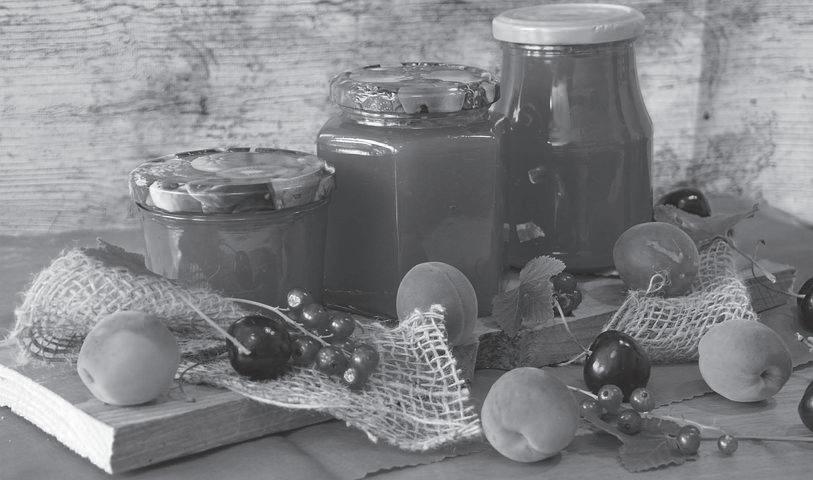
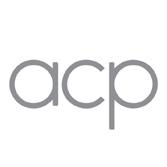
The Northern Light is a proud member of the Associated Collegiate Press. The Northern Light is a weekly UAA publication funded by student fees and advertising sales. The editors and writers of The Northern Light are solely responsible for its contents. Circulation is 2,500. The University of Alaska Anchorage provides equal education and employment opportunities for all, regardless of race, color, religion, national origin, age, sex, Vietnam-era or disabled-veteran status, physical or mental disability, changes in marital status, pregnancy or parenthood. The views expressed in the opinion section do not necessarily reflect the views of UAA or the Northern Light.
The University of Alaska is an affirmative action/equal opportunity employer and educational institution. The University of Alaska does not discriminate on the basis of race, religion, color, national origin, citizenship, age, sex, physical or mental disability, status as a protected veteran, marital status, changes in marital status, pregnancy, childbirth or related medical conditions, parenthood, sexual orientation, gender identity, political affiliation or belief, genetic information, or other legally protected status. The University’s commitment to nondiscrimination, including against sex discrimination, applies to students, employees, and applicants for admission and employment. Contact information, applicable laws, and complaint procedures are included on UA’s statement of nondiscrimination available at www.alaska. edu/nondiscrimination.
The Northern Light encourages readers to express their views in the newspaper. The Northern Light reserves the right to reject or publish any submission, online or in print.
Letters to the editor can be submitted to editor@thenorthernlight.org. The maximum length for a letter to the editor is 250 words, and 150 words for letters specifically endorsing candidates for federal, local, or university office. A letter to the editor is written by someone who does not have authoritative knowledge on the subject they are discussing. Contributors are restricted to one published letter to the editor per month.
Opinion pieces can be submitted to editor@thenorthernlight.org. The maximum length for a contributor’s opinion piece is 450 words. Contributors are restricted to one published opinion piece per month. Opinion pieces written by staff of The Northern Light are limited to 800 words. An opinion piece that is published in The Northern Light should be written by someone who has authoritative knowledge on the subject they are discussing.
Letters and opinion pieces are subject to editing for grammar, accuracy, length and clarity. All letters and opinion pieces must include names, major and/or group affiliation and contact information for verification purposes. The Northern Light will not publish anonymous letters or pseudonyms. Requests for corrections can be sent to editor@thenorthernlight.org. Print publication is subject to accuracy and available space. All corrections are posted online with the original story at www. thenorthernlight.org. The deadline for submissions is the Friday before publication at noon, no exceptions.
The Northern Light newsroom is located on the first floor of the Student Union Room 118.
A taste of the Himalayas brought to the Chugach foothills.
By Kyle Ivacic news2@thenorthernlight.org
Nestled in a strip mall at the corner of Tudor and Lake Otis, hungry students can find an Asian food gem known as Namaste Shangri-La. The restaurant’s large menu offers culinary delights from across the Himalayan region that are sure to appease even the hungriest of stomachs at a student-friendly price.
Nearing the restaurant, I was struck by the delicious scent of curry – my personal favorite dish – and I knew I was in for a treat. An ethereal musical mix –likely tunes from Northern India or Nepal – met my ears upon entering and I was quickly seated by a host.
A hefty menu was placed in front of me, and I soon found that there were options for all kinds of eaters – with vegetarian and vegan options having
a comfortable amount of menu space. An entire page dedicated to the sauces for pairing with appetizers and entrees described each, leaving no doubt about what flavor to expect.
As for appetizers, there was a large selection, and I ordered only one: papadum. This delectable treat was described by the menu as “crispy lentil wafers, roasted in [a] tandoori oven.”
I had never tried this before but am more than happy that I ordered it. This bready dish had the look of a toasted tortilla; however, the flavor was closer to that of an unsalted cracker.
The real pop of the papadum were the sauces that came with it. Not listed on the menu, these sauces came as a surprise to me – one brown and one green. The brown sauce, red chutney, offered a tangy, yet sweet flavor while the green one, green chutney, tasted sweeter and the flavor of cilantro noticeably stuck out.
This was a great appetizer that left me wanting more – luckily my entrée was soon to follow. My appetizer plate was whisked away and shortly after replaced by the main course. This consisted of chicken vindaloo, white rice and garlic naan bread. The menu explained that vindaloo sauce is a combination of onion and tomato sauces cooked with vinegar and Hima-
layan herbs and spices. I was given the choice of different spice levels, of which I chose spicy. This dish was delicious and easily lived up to the scent of curry that I originally smelled when entering. Not too spicy or overpowering, the chicken vindaloo provided much-needed warmth and flavor for the cold March day on which I enjoyed it.
The garlic naan bread was equally appetizing. It provided a reprieve from the chicken’s spice
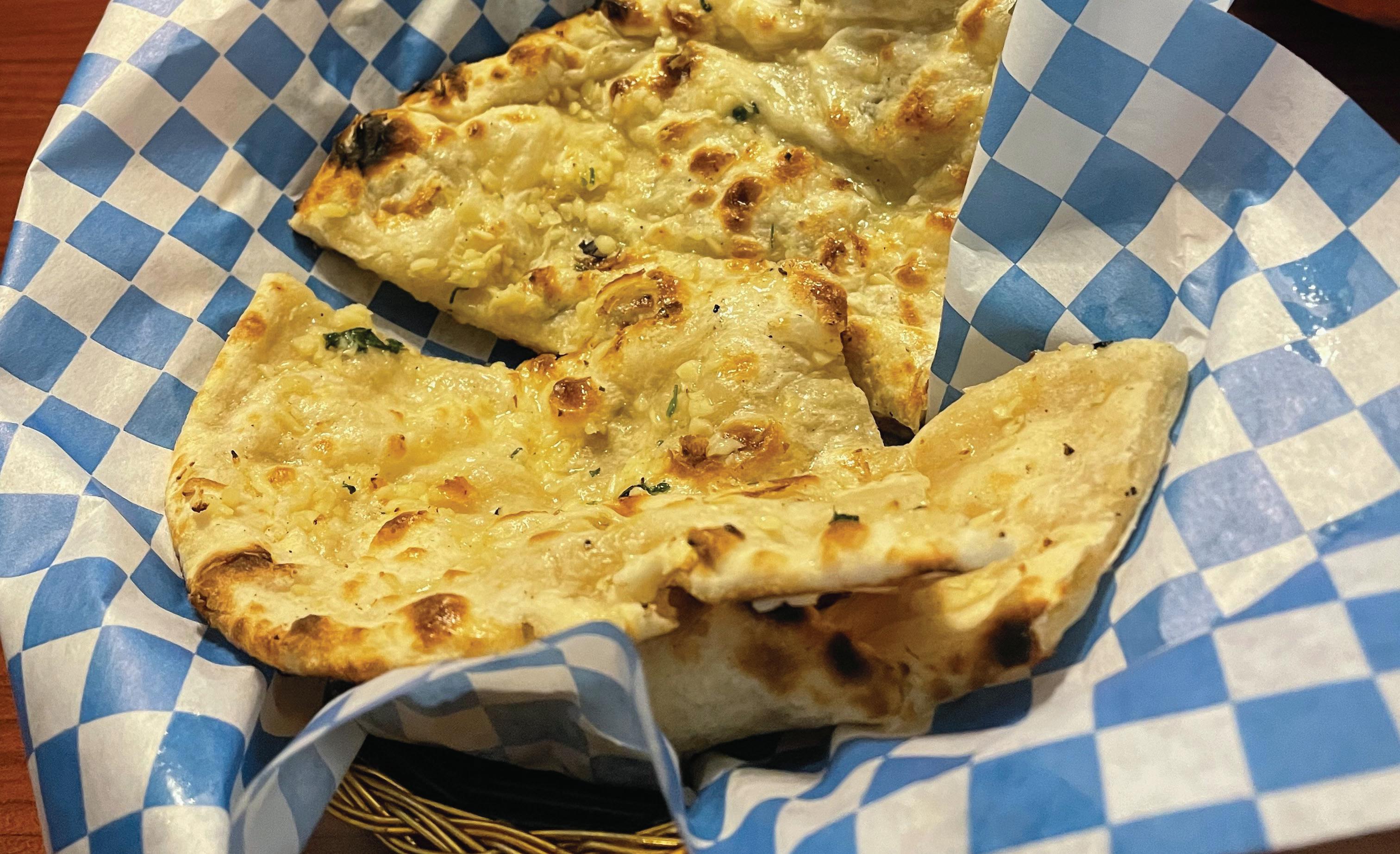
TNL is doing a series looking into food options on campus, and this story covers food for Seawolves who need a little extra until the end of the month.
By Kaycee Davis features2@thenorthernlight.org
When TNL decided to write a group project on what’s available to eat on and around campus, my thought was to write about bringing your own lunch to work. Lunch is easy to order, but it gets expensive.
As I started writing, one of my old articles came up in my files about the food pantry at UAA and I remembered that a lot of Seawolves are struggling with hunger and food insecurity.
I spoke with Amanda Walch at the UAA Seawolf Food Pantry, located in the Professional Studies Building ,and made arrangements to drop by. First though I stopped the UAA Emergency Food Cache.
In my previous article, I advised readers to get a bag of food if they needed it, and this time I wanted to see what it was like to get it myself. Having experienced food insecurity before, I also wondered if anyone would notice why I was there.
From my observation, was the wiser.
It was easy to go to the UAA Student Health and Counseling Center in room 120 at Rasmuson Hall and get the emergency food bag. It was just as easy to run over to Professional Studies Building 212 during their open hours to sign in and get some groceries at the pantry.
I spoke to Breeayne Dinius at the pantry about how to create lunches from what I got and she said that the food available is so varied every time that it is hard to make a generalization based on what I had been given — as I did not need the food, it went back into the program.
I was intrigued by the pains the programs took to let students be discreet. I was given food at the cache in a reusable shopping bag, the kind that if you are looking, you will see people carrying everywhere on campus and around town. The shopping bag was the perfect size for the emergency food for one person for three days. At the pantry, had I done a pick up, I would have
been given another bag, with the contents being covered up.
I asked Breeayne if students were embarrassed about using
the food pantry and she said that there is a stigma attached to food insecurity. Whether it is because people are embarrassed or they just don’t want to advertise their plight, she couldn’t say.
I was impressed by the pan-
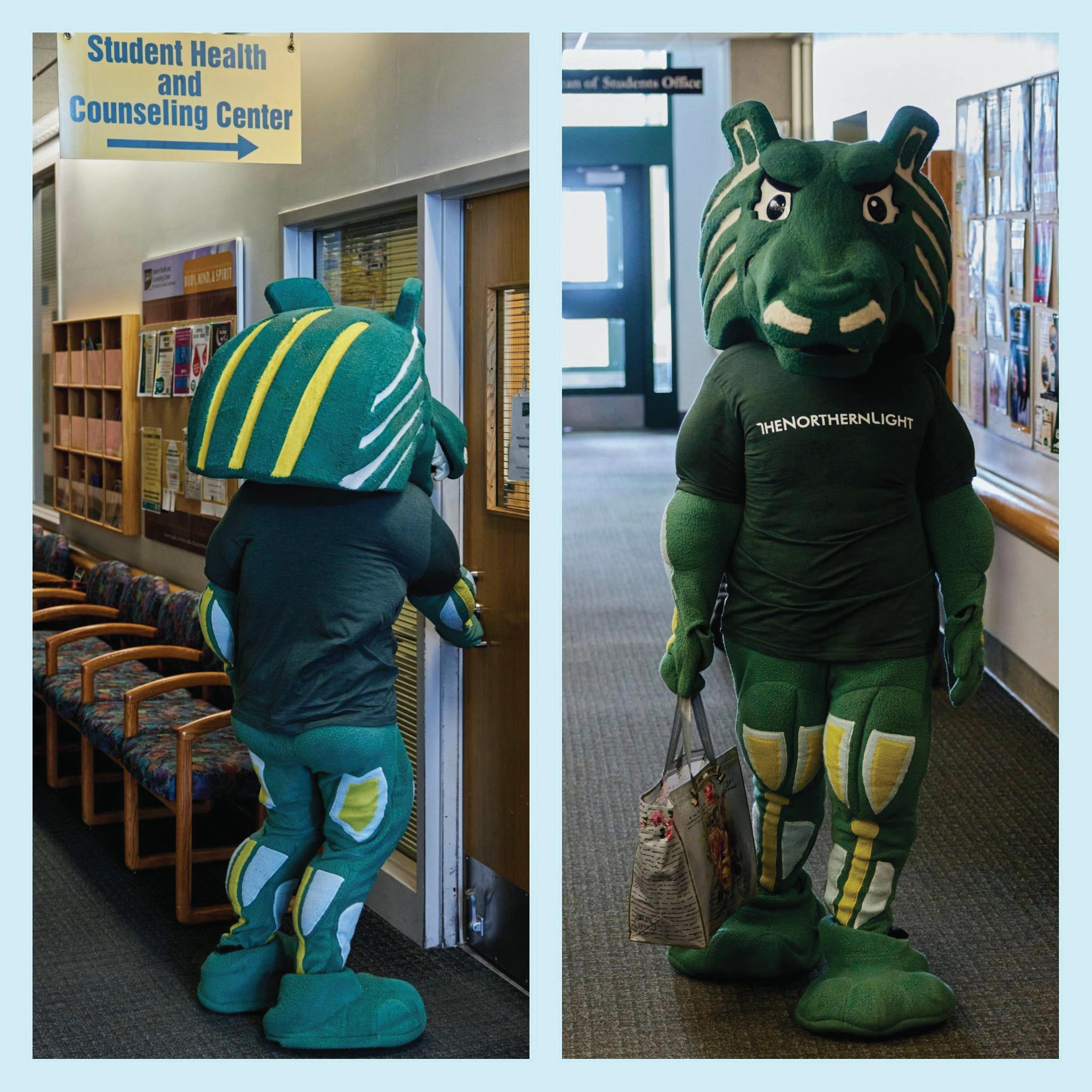
when needed and was great when dipped in the vindaloo sauce. The flavor was sweet and, obviously, garlicky – again, just right and not overpowering.
To finish my mission at Namaste Shangri-La, I ordered “Nepali Kheer” for dessert. This was a rice pudding flavored with milk and cardamom. The pudding, served with a sprinkling of almonds, was sweet and satisfying. Several other dessert options made an appearance on the menu as well, such as coconut and pistachio ice creams and carrot pudding. I was impressed with the lengthy menu and reasonable prices. Most appetizers and desserts ranged between $3 and $4 while entrees cost roughly $15. The chicken vindaloo, for example, cost $15.95 and could easily feed two people.
Overall, Namaste ShangriLa provided great food and friendly service at a price point that is within reach for college students. It is located roughly a two-minute drive from campus at 2446 E Tudor Road.
try because in the small space of maybe 10’ x 8’, it was well organized, with cabinets and drawers, and signs telling patrons how many of the items they could put in their bags depending on the size of their household. There was also a drawer with period protection – Breeyane said that period poverty is when people don’t have the money to pay for menstrual products..
I was told that if students cannot make it within the hours of the pantry being open that they can email uaa_seawolfpantry@ alaska.edu and that they would try to make accommodations.
I am glad to see some groups at UAA noticing the food struggles of students and filling a need as best as they can. As college costs increase and inflation continues to rise, particularly hitting the gas pump, utilities, and grocery stores, it is getting harder to budget. Prices for utilities, gas, and college classes are independent variables that are unavoidable.
The food cache and the pantry can help Seawolves make ends come closer together. Everyone involved with making these services possible care very much, and hope students utilize them.
TNL is doing a series looking into food options on campus, and this story considers buying a lunch bag or box to keep your meals cool and uncrushed.
By Kaycee Davis features2@thenorthernlight.org
Are you convinced that bringing lunch to work or school is for you? Do you not know how to get started, or are you all in and want to wrap your sandwich in beeswax and drink from biodegradable straws from the start?
My personal suggestion: just start. Start with what you can afford, or modify, to what you need as you can afford it. The purpose of a lunchbox is basic and the options are plentiful.
In an article discussing finding the right lunch box for your child — which can easily be for you, an adult, with or without children — The Root Cause acknowledges that “If you think of lunchbox tools just in terms of
the money you have to outlay, then they are an annoying expense – a necessary evil. However, if you flip the conversation around to what these tools can do for you, then the money you spend actually becomes an investment in your sanity.”
The Root Cause details “lunchbox tools” which include the lunch box, a cooler bag, a drink bottle, and other things you might need, such as for salad dressing, salsa, soup, or hot drinks. If you are worried about not using disposable plasticware, Walmart has you covered with reusable utensils. The price $8.56 is affordable, especially when compared to the price of a package of white disposable plastic forks, which is $5.50.
According to The Organized Housewife, deciding the size of the lunchbox depends on how
much you plan to eat, and where. Will you be eating in the cafeteria, or will you be eating on the run in your car between classes? If you are eating at work, will you stash your lunch in your car or have space under your desk or in a refrigerator? She suggests that you get an insulated bag even in cool weather because it keeps the contents fresh.
Doing a simple shop search, you can find lunch bags in stainless steel, neoprene, and tin. You can find “a chic, functional alternative to the traditional lunchbox… crafted of soft vegan leather” for $189 at Saks, or you can find variations of lunch bags, lunch boxes, and bento boxes at Walmart for less than $25. There is something for every budget and taste. Keep in mind that there is nothing wrong with brown paper bagging it, but paper bags tear easily and can fall apart fast in a backpack.
I went local to a Walmart in Eagle River where there was a
selection of bento boxes, meal prep containers, drink containers, and insulated lunch boxes. Walmart is not the only place to pick up lunch preparation items, but I found the options plentiful and readily available.
The blogs from which I gleaned ideas were also concerned with how easy the boxes are to clean. How likely are you to remember to bring your lunch box inside your kitchen and wash the containers out and start over again for the next day? There are some wonderful divided containers that you can buy that are designed to go with certain bags, but if you don’t plan to wash them out, or think you will be too busy, you are wasting your money. Plan on buying ziplock bags or prepackaged food until you are ready to spend a few minutes washing your containers. It is always fun to share recipes, but you will fill your lunch bag with what you like to buy
and make. When my children were little, I remember teachers telling us to send our kids to school with “healthful choices.” If I didn’t put food in that they liked, kids would eat what they wanted and the rest came home to be tossed. Like children, adults probably won’t eat what they don’t like, and this includes the person paying for the food. Houston Methodist Hospital, which is affiliated with Houston Medical Center, says that a “well-balanced meal — lunch included — consists of lean protein, fiber-rich sources of carbohydrate and veggies, and healthy fats.” No matter how you fill your lunch bag, be it with gourmet food that you make from scratch or with mostly prepacked food you enjoy, fill it with what you like and make lunch be something you savor.
Bon appétit!